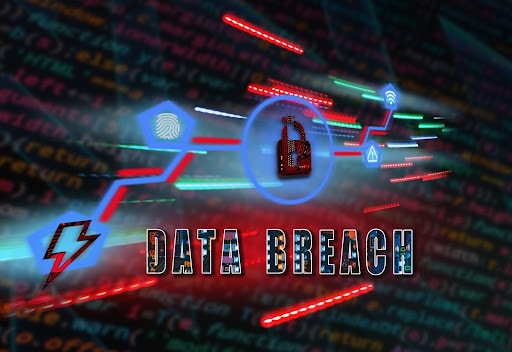Data breaches are nothing new as the number of leaked information skyrockets. Information leaks have become so common that security specialists have started using the term ‘breach fatigue’ to explain how we’ve gotten so used to data breaches that many users don’t react to notifications of leaks anymore.
However, now is not the time to become complacent and we should be doing more to protect our data. In this article, we’ll be looking more closely at information breaches, what causes them, and we’ll even give a few examples. We’ll also look at protecting data from these breaches, such as using reliable proxies like a location-specific US proxy, updating software, and enabling two-factor authentication.
In this article, we’ll cover the following topics on data breaches:
- What is a data breach?
- Common causes of data breaches
- The biggest breaches to date
What Is A Data Breach?
A data breach is defined as a situation where sensitive or confidential information is viewed, copied, and shared by individuals not authorized to do so. In some cases, this can be unintentional, such as an employee accidentally sending a list of personal information to the wrong person. In other cases, a data breach can occur as the direct result of an attack by cybercriminals.
Data breaches can be very serious and are occurring more frequently. Last year alone, these leaks showed an increase of 50%, and the stats continue growing. This is why governments are penalizing businesses with fines if a data breach occurs, and it becomes apparent that the business wasn’t doing enough to protect the information. Cybercriminals can use the leaked data for more serious attacks such as phishing, identity theft, or gaining access to business systems to launch ransomware attacks.
Common Causes Of Data Breaches
To understand how to protect yourself and your business data, you have to know how data breaches occur. There are a few different causes of information leaks, but we’ll look at the eight most common causes.
Weak Or Stolen Credentials
Weak or stolen credentials and logins remain a big part of data breaches. Using the same passwords across multiple devices, using easy-to-guess or simple passwords, or sharing passwords can all be exploited to lead to a data breach.
Solution: Enforce the use of strong passwords and two-way authentication to gain access to sensitive files and systems.
Applications And Vulnerabilities
Exploiting vulnerabilities in systems and applications is one of the easiest ways hackers can access your files. This is why keeping apps and other programs updated with the latest patches is so important. These updates usually include many security improvements to lessen vulnerabilities.
Solution: Keep all apps and programs up to date.
Malware
Malware is malicious software that can cause various degrees of harm depending on the specific type of malware. In the case of data breaches, malware can be hidden in emails, apps, and programs and, once opened or installed, can open up a gateway for hackers to gain access to your files.
Solution: Only visit secure websites and be careful of opening emails that look suspicious or ask you to click on a link or attachment. You can also use a US proxy (or other location-specific proxies) depending on your needs) to protect and hide your IP address, making it difficult for hackers to track and exploit you.
Social Engineering
Social engineering uses collected information to persuade users to share certain files or access with the attacker, such as phishing attacks. These attacks can become quite advanced and may look and sound like legitimate requests.
Solution: Teach employees how to spot phishing attacks and implement a two-person approval protocol whenever sharing information or files. Again, a US proxy can help disguise your IP address so hackers can’t gain enough information to make their emails more convincing.
Permissions and Access
Many businesses give their employees too much access. Some employees have free access to data, systems, or files that they don’t require for their work. This places those data sets in great danger.
Solution: Only give access to files or systems to the employees that need them for their daily operations.
Insider Threats
If an employee becomes disgruntled or feels they’re treated unfairly, what keeps them from stealing, altering, or deleting the data they have access to? It’s important to monitor employee situations and ensure that there are protection measures when employees are asked to leave.
Solution: Give employees limited access only to what they require and set protocols to prevent disgruntled employees from accessing data, such as restrictions, lock-outs, and more.
Physical Attacks
These occur when there is a physical theft involved, such as laptops, hard drives, or USB devices being stolen, or when paperwork and files are misplaced or given to the wrong person.
Solution: Be vigilant and put physical data handling protocols in place.
User Error
This happens when an employee makes a mistake, such as sending an email with confidential information to the wrong person or similar.
Solution: Staff training.
The Biggest Breaches To Date
The first-ever data breach that received widespread media coverage happened in 1986. Since then, these occurrences have grown, and now there are breaches every few weeks. Here are five of the biggest data breaches on record:
- Yahoo’s data breach in 2013 affected 3 billion users.
- First American Financial Corporation’s breach in 2019 affected 885 million users.
- Facebook’s breach in 2019 affected 540 million users.
- Marriott International’s data breach in 2018 affected 500 million users.
- Adult FriendFinder Network’s breach in 2016 affected 412.2 million users.
Final Thoughts
While the targets of data breaches are usually larger corporations with a lot of data, that doesn’t mean that individuals aren’t targeted. In many cases, individuals create the ideal entry point for criminal attacks since the individuals’ security and protection might be easier to break through. Using a US proxy alongside antivirus programs and other measures is critical to protect your data.



